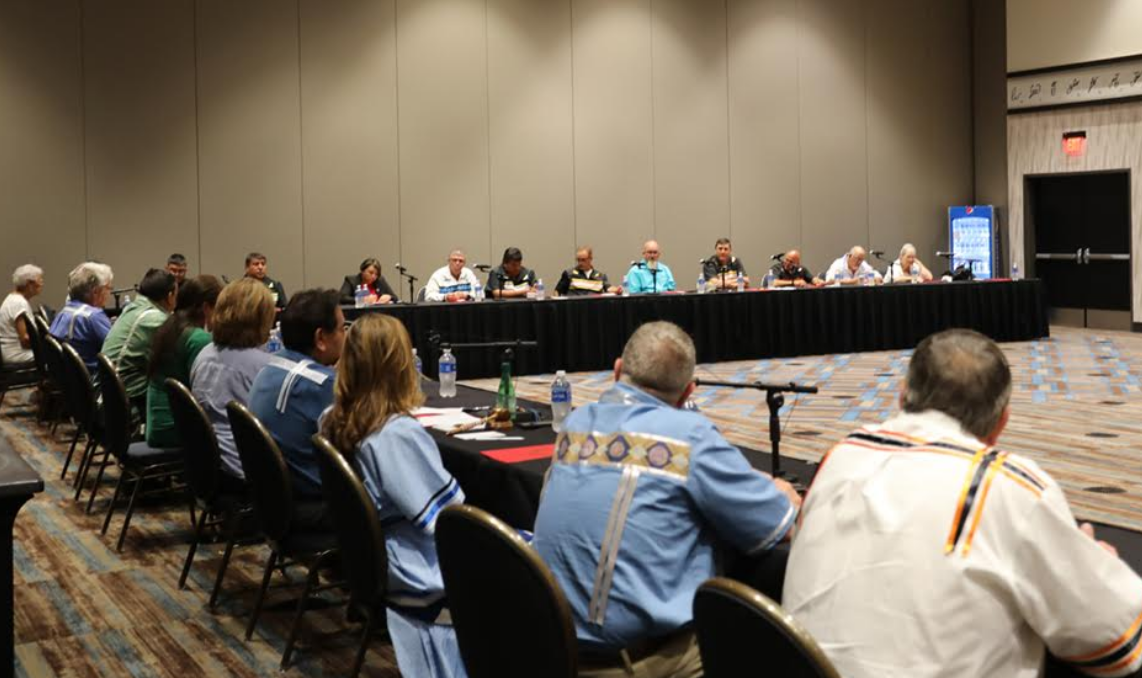
- Details
- By Chuck Hoskin Jr
The annual Tri-Council gathering of Cherokee leaders from the Cherokee Nation, the Eastern Band of Cherokee Indians and the United Keetoowah Band of Cherokee Indians is an opportunity to celebrate our shared values and culture, as well as our diverse histories. Our separate, sovereign governments are the only three federally recognized tribes of Cherokees. Together, we represent more than 420,000 Cherokee citizens.
Sadly, we were forced to skip last year’s gathering due to the global pandemic, but I am proud that Cherokee Nation was again able to host this year’s event. Our three tribes came together in Tahlequah for the weeklong meeting, with social and cultural activities as well as shared legislative actions. As always, our Tri-Council meeting left me inspired and optimistic for our collective future.
Want more Native News? Get the free daily newsletter today.
The Tri-Council passed resolutions this week that will:
- Celebrate the 200th anniversary of the Cherokee syllabary.
- Advocate for Murdered and Missing Indigenous Women (MMIW).
- Oppose the recognition of fabricated Cherokee tribes.
- Honor frontline workers who survived the COVID-19 pandemic.
Our three Cherokee governments may not agree on everything, but we nonetheless come to the table to focus on the issues important to us all, especially the perpetuation of our language. We work to find common ground because we are one people, bound by history and united in spirit.

It means so much to me personally to witness these joint governmental gatherings led by our various tribal councils, each taking a turn at the helm annually. It is incredibly uplifting when we gather to make a unified voice fighting to better the lives of all Cherokee people, wherever they may be. As the elected leaders of our people, it is crucial that we continue this event year after year.
I remain a student of Cherokee history, and I believe the Cherokee people have more cause for hope today than at any point in the past. That hope is born from the fact that all three Cherokee tribes are building unique and sustainable paths to better and brighter futures for our citizens. We all want to ensure future generations have greater opportunities and a sense of optimism going forward.
While our three tribes have slightly different histories during the past decades, we all come from the same origins. We are all Cherokee. We are all family. Our commonalities are greater than our differences. No matter what issues come between us, in the end we are united by our culture and heritage.
The Cherokee Tri-Council affords a chance for all of us to join together as one body politic and talk about the things that mean the most to our combined people. I believe our ancestors would be proud to see this powerful unity.
When Cherokee people come together, great things happen. Our Tri-Council manifests that in the best possible way. I’m already looking forward to next year.
Chuck Hoskin, Jr. is the principal chief of the Cherokee Nation, based in Tahlequah, Okla.
More Stories Like This
Tribes Do Not Need a Greenlight to Build Renewable EnergyLaw Should Not Get in the Way When "Manifest-ing Destiny"
Celebrating 35 Years of Gaming Success
My Tribe’s ICE Contract Betrayed Our Values
Extending the Affordable Care Act Is a Moral Imperative for Indian Country
Help us defend tribal sovereignty.
At Native News Online, our mission is rooted in telling the stories that strengthen sovereignty and uplift Indigenous voices — not just at year’s end, but every single day.
Because of your generosity last year, we were able to keep our reporters on the ground in tribal communities, at national gatherings and in the halls of Congress — covering the issues that matter most to Indian Country: sovereignty, culture, education, health and economic opportunity.
That support sustained us through a tough year in 2025. Now, as we look to the year ahead, we need your help right now to ensure warrior journalism remains strong — reporting that defends tribal sovereignty, amplifies Native truth, and holds power accountable.
 The stakes couldn't be higher. Your support keeps Native voices heard, Native stories told and Native sovereignty defended.
The stakes couldn't be higher. Your support keeps Native voices heard, Native stories told and Native sovereignty defended.
Stand with Warrior Journalism today.
Levi Rickert (Potawatomi), Editor & Publisher
